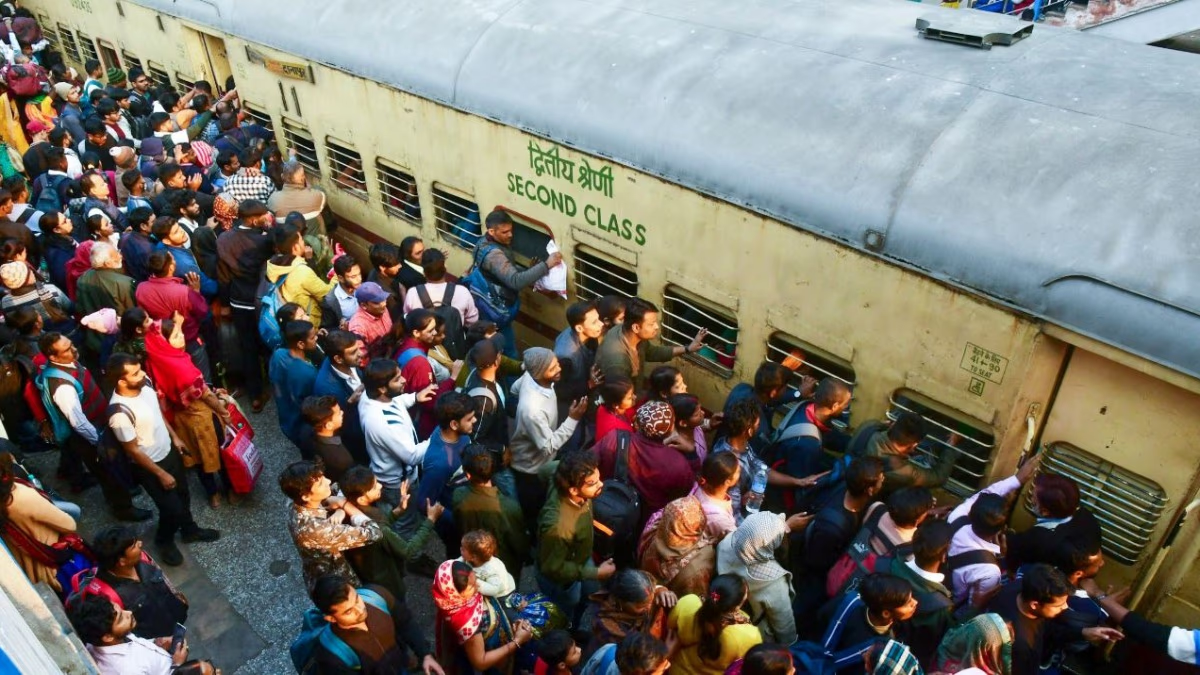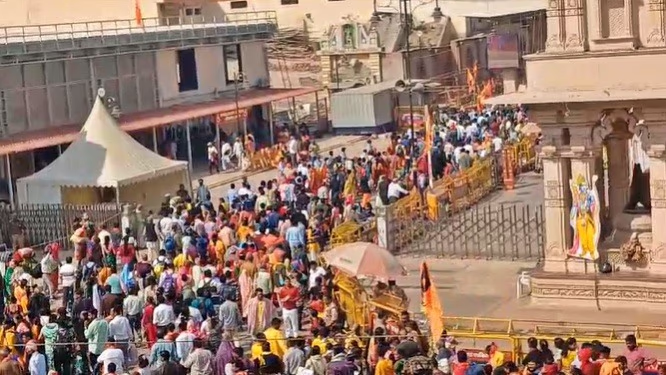The Freedom Fighter Express halts at Samastipur railway station in Bihar as a throng of devotees struggles to board. Within minutes, the train is filled to capacity, leaving hundreds stranded. The crowd at the station is so dense that porters charge 1,000 rupees to help people enter through emergency windows. Both the general and sleeper coaches are equally cramped, as passengers find any available space to board for Prayagraj, which is 500 kilometers away. This situation in Samastipur illustrates the massive influx of devotees heading to Prayagraj from all over the country.
Overflowing Crowds on Trains, Roads, and Stations
Not just at Samastipur, but across stations in Uttar Pradesh, Madhya Pradesh, Bihar, and Delhi, the scene is the same. Roads are jammed for miles, and vehicles en route to Prayagraj are being turned back before entering the district. A deluge of vehicles is on the roads, and railway stations are packed, with no space left on trains bound for Prayagraj. Despite the government deploying over 100 special trains on the Prayagraj route, the congestion persists.
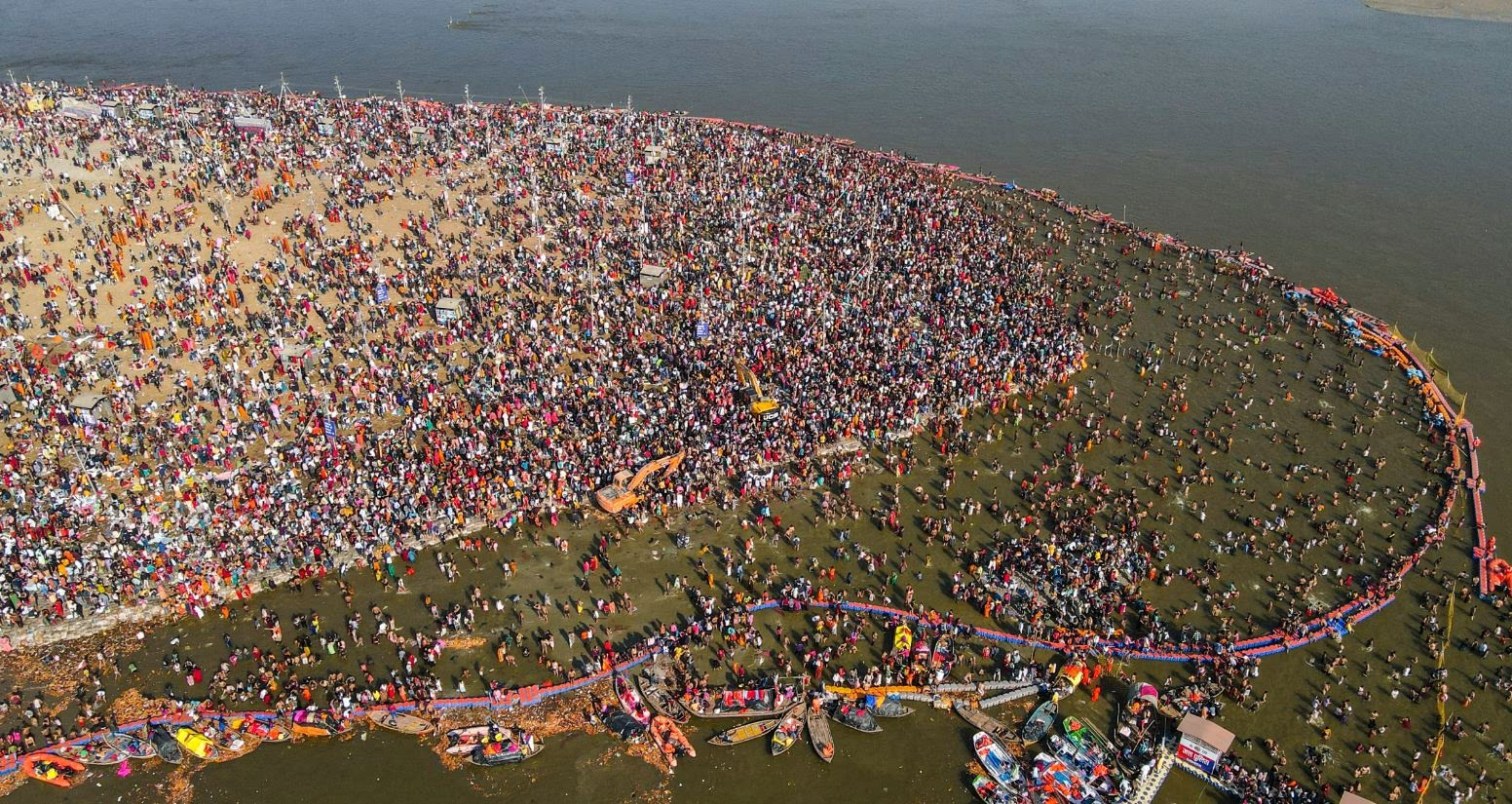
Source: aajtak
Prayagraj hosts the largest religious congregation of the century at the Kumbh, where millions of devotees are taking holy baths daily. Following the chaos on Mauni Amavasya, authorities are enforcing strict entry restrictions to limit pilgrim numbers in Prayagraj. This has led to extensive traffic jams on routes leading to the city from various districts, with people stuck in traffic for 8-10 hours. Since January 13, over 400 million devotees have taken a dip in the Sangam, and the count continues to rise.
8,000 Vehicles Arriving Every Hour
A tidal wave of devotees is pouring into the Kumbh for the holy bath. Over the past three days, 1.5 million vehicles have descended on Prayagraj alone, with around 8,000 vehicles arriving at the confluence city every hour. On a single day, Sunday, around 15 million devotees took the holy dip here. The staggering scenes of the crowds and the overwhelming traffic jams have left the world in awe. Yet, the faithful continue to flock to this grand Kumbh Mela unabated. This overwhelming turnout comes even after many processional groups left following the Mauni Amavasya bath. Now, anticipation for the Magh Purnima bath on Wednesday is high, with pilgrims who arrived over the weekend setting up camps in Prayagraj.
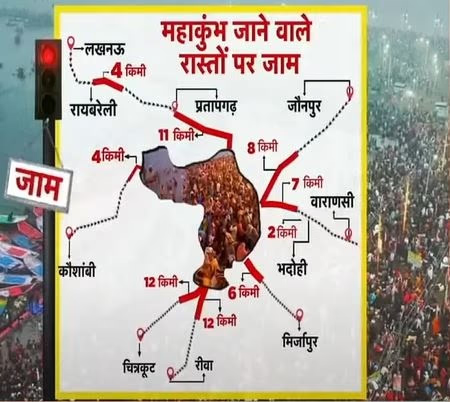
Source: aajtak
Long Traffic Jams on Routes to Prayagraj
Such is the chaos that Prayagraj's Sangam railway station has been closed until February 14. Congestion abounds on routes from neighboring districts like Rewa, Chitrakoot, Mirzapur, Varanasi, Jaunpur, Lucknow, Pratapgarh, Kanpur, and Kaushambi leading to Prayagraj. On Sunday, a 10-kilometer jam stretched through Jhusi, Naini, and Phaphamau areas. Most pilgrims are attempting to reach Prayagraj in private vehicles, contributing to the road congestion.
Of the 112 parking facilities created along the seven routes to Prayagraj, only 36 remain operational. This has resulted in a caravan of private vehicles stalled en route to Prayagraj, causing long traffic jams due to insufficient parking arrangements. Returning vehicles also contribute to jammed major highways. Those stuck on the roads have taken to social media, appealing to Prayagraj Police to clear the congested roads.
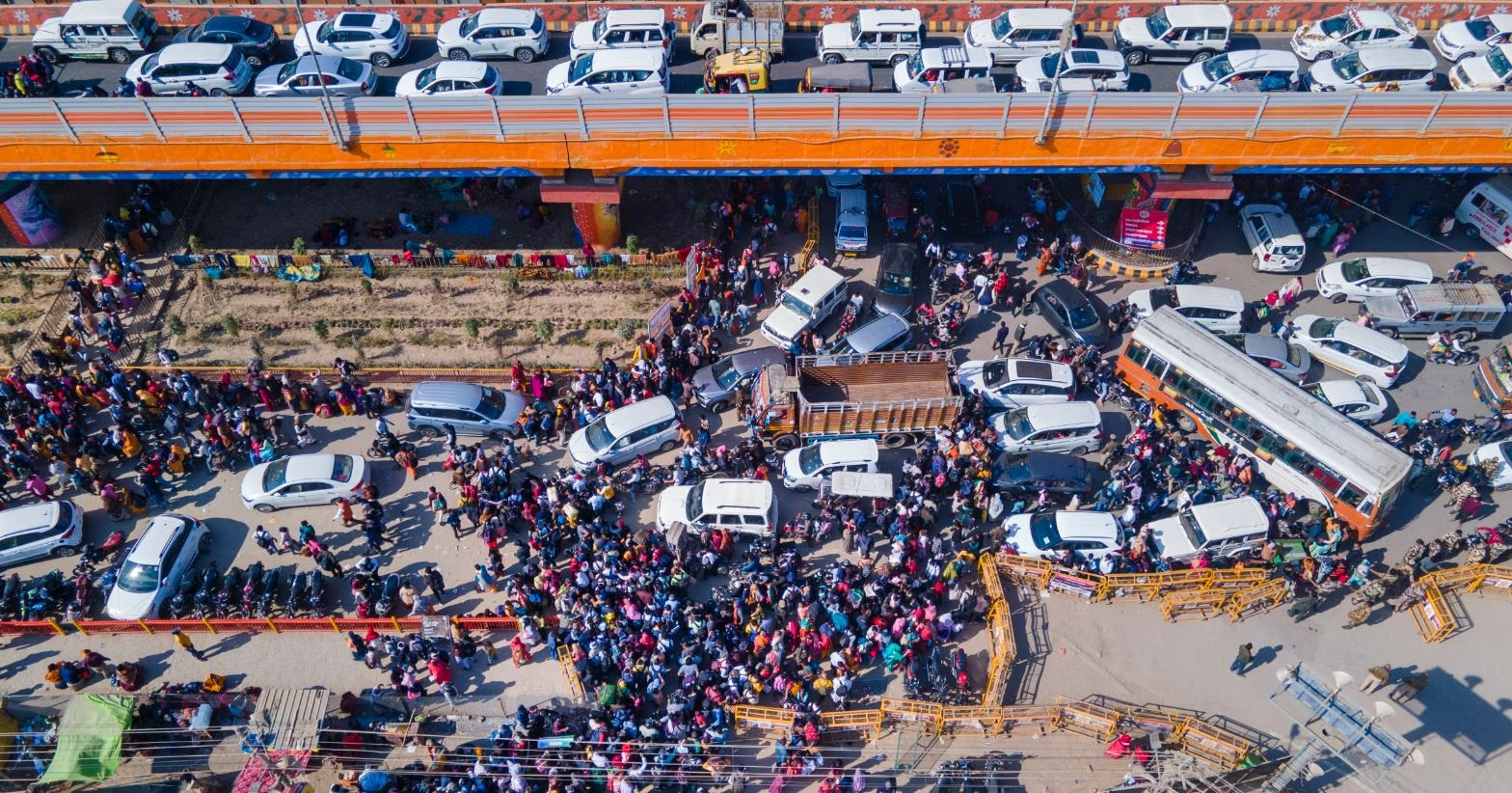
Source: aajtak
The majority of pilgrims arriving for the Prayagraj baths are also visiting Varanasi and Ayodhya, where vehicle congestion is also rampant. Particularly on weekends, the number of people increases significantly. Hanuman Garhi in Ayodhya is witnessing crowds of devotees, leading to occasional discomfort. Recently, the Shri Ram Janmabhoomi Teerth Kshetra Trust appealed to pilgrims to avoid visiting Ayodhya to prevent disorder, yet the cities continue to see heavy footfall at religious sites.
